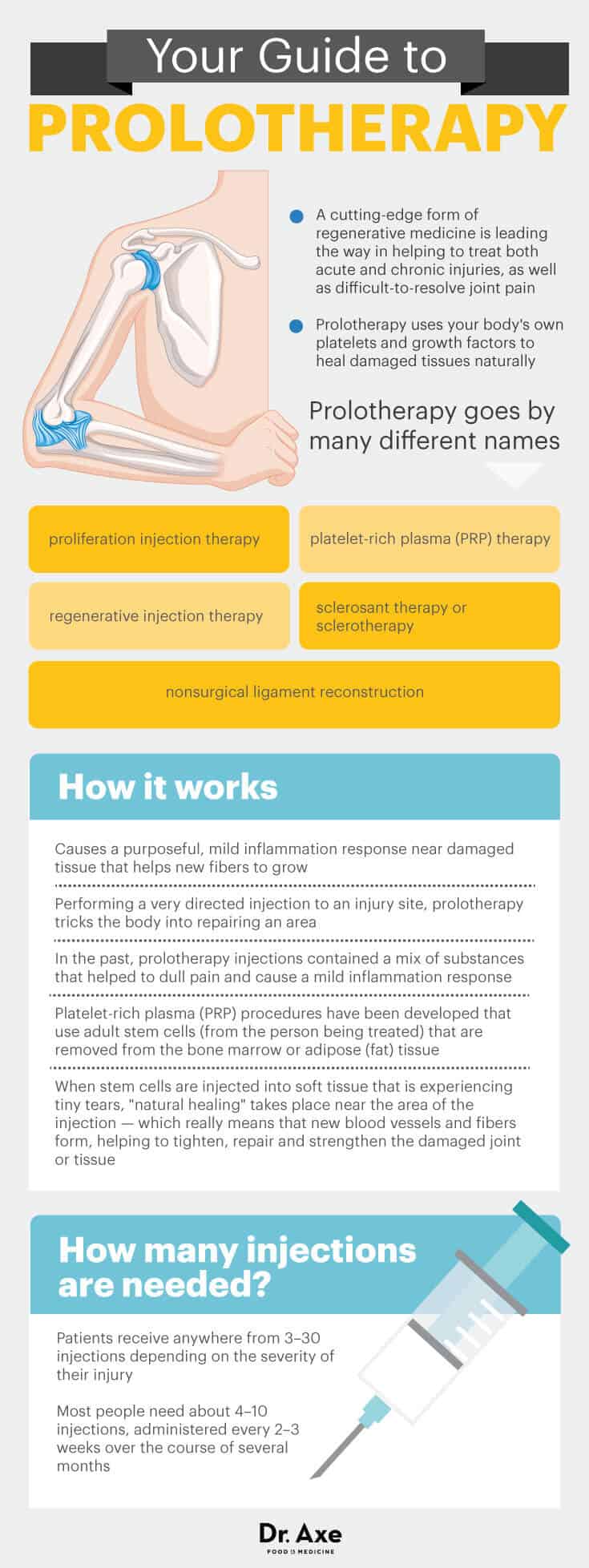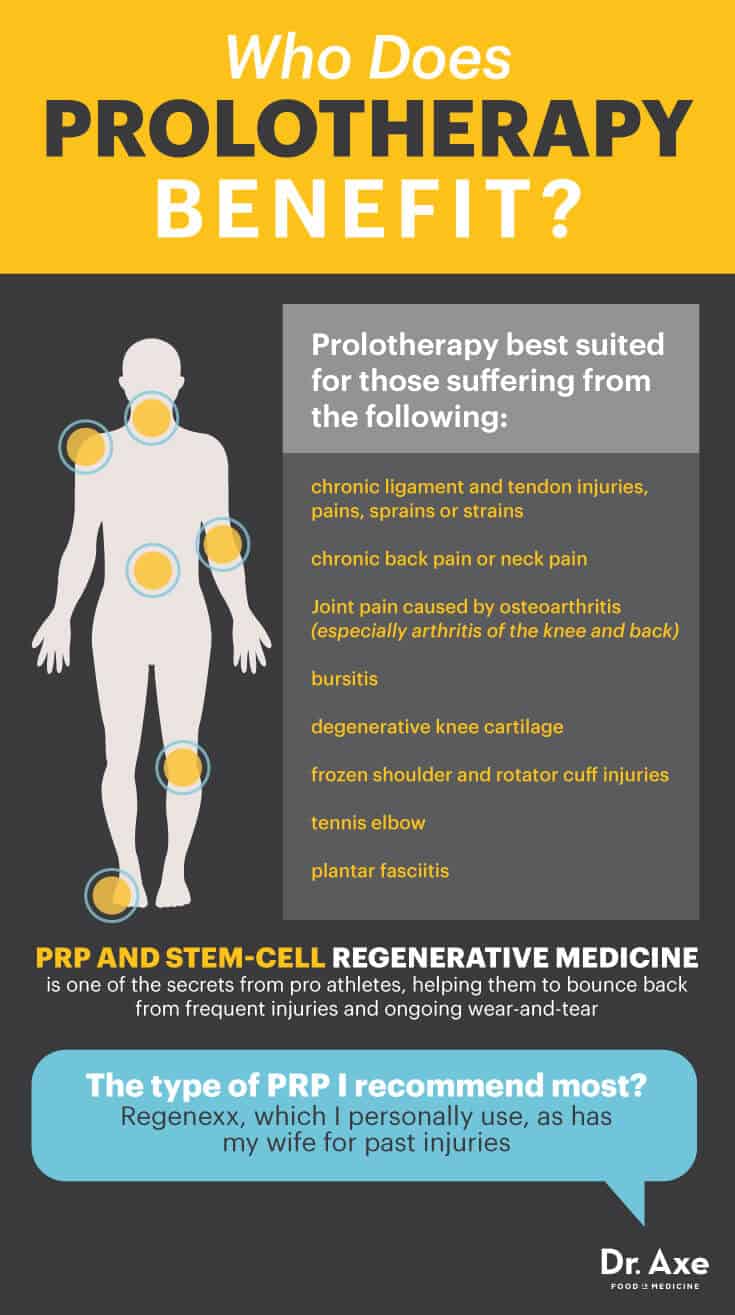This Dr. Axe content is medically reviewed or fact checked to ensure factually accurate information.
With strict editorial sourcing guidelines, we only link to academic research institutions, reputable media sites and, when research is available, medically peer-reviewed studies. Note that the numbers in parentheses (1, 2, etc.) are clickable links to these studies.
The information in our articles is NOT intended to replace a one-on-one relationship with a qualified health care professional and is not intended as medical advice.
This article is based on scientific evidence, written by experts and fact checked by our trained editorial staff. Note that the numbers in parentheses (1, 2, etc.) are clickable links to medically peer-reviewed studies.
Our team includes licensed nutritionists and dietitians, certified health education specialists, as well as certified strength and conditioning specialists, personal trainers and corrective exercise specialists. Our team aims to be not only thorough with its research, but also objective and unbiased.
The information in our articles is NOT intended to replace a one-on-one relationship with a qualified health care professional and is not intended as medical advice.
Prolotherapy: the Answer to Healing the Injuries that Won’t Go Away?
Reviewed by Ron Torrance, DO, FAOASM
July 15, 2016

Prolotherapy is a cutting-edge form of regenerative medicine that is leading the way in helping to treat both acute and chronic injuries, as well as difficult-to-resolve joint pain. Studies suggest that you can benefit from prolotherapy if you have TMJ (temporomandibular dysfunction of the jaw), arthritis, a torn ligament, tendonitis, a bulging disc, or pain in any susceptible area such as your neck, lower back, knee or shoulder.
Personally, having suffered a herniated disc lifting weights as well an injured shoulder, prolotherapy has done wonders for my recovery, and now I recommend to anyone whose injuries cannot be solved by a chiropractor.
Prolotherapy uses your body’s own platelets (PRP, or platelet-rich plasma) and growth factors to heal damaged tissues naturally. Through utilizing glucose and increasing collagen production to re-create your body’s own natural healing process, prolotherapy is considered one of the most advanced forms of regenerative medicine available today for the repairing of damaged tissue fibers and joints.
What is really extraordinary about stem prolotherapy is this: When you remove your body’s own stem cells from one location and re-inject them into another damaged area, the stem cells automatically know how to transform into the type of cells your body needs in order to perform healing. For example, if you partially tear the ACL in your knee, your stem cells adapt by turning into cells that form a strengthened, repaired ACL ligament.
Prolotherapy is one of the new secrets from pro athletes, helping them to bounce back from frequent injuries and ongoing wear-and-tear. Want to know how Kobe Bryant came back from what should have been a career ending Achilles tendon tear at 38 years old? He received prolotherapy treatments, as did Peyton Manning.
The type of prolotherapy I recommend the most? Regenexx, which I personally use, as has my wife for past injuries. In particular, I went to see Dr. Chris Centeno, Dr. John Schultz, Dr. John Pitts and Dr. James Leiber, who run the Regenexx clinic in the Cayman Islands. I consider these three doctors to have the most researched stem-cell and PRP clinic in the world.
What Is Prolotherapy?
First, prolotherapy goes by many different names but isn’t the exact same therapy. I explain more about these overlapping therapies later in the article:
- Proliferation injection therapy
- Platelet-rich plasma (PRP) therapy
- Regenerative injection therapy
- Sclerosant therapy or sclerotherapy
- And sometimes nonsurgical ligament reconstruction
Prolotherapy is an injection procedure that helps resolve tiny tears or injuries to connective tissue located throughout the musculoskeletal system (ligaments, tendons, muscle fibers, fascia and joint capsules). Often connective tissue becomes injured when it is torn away from a nearby bone. Prolotherapy is most often used in the case of injuries or conditions that cause chronic pain which don’t respond well to other natural therapies or medications (nonsurgical treatments).
Who can benefit from prolotherapy most?
Stem cell therapies are suited for people with: (1)
- Chronic ligament and tendon injuries, pains, sprains or strains
- Chronic back pain or neck pain
- Joint pain caused by osteoarthritis (especially arthritis of the knee and back)
- Bursitis
- Weakness and instability that lasts for more than six weeks and is tied to muscle or joint pain
- Degenerative knee cartilage
- Frozen shoulder and rotator cuff injuries
- Chronic elbow tendonosis (tennis elbow)
- Plantar fasciitis
- People who take pain-reducing medications frequently (including Advil, aspirin, ibuprofen, oral steroids) but don’t feel their condition is getting better
- Those who fail to feel better after having corrective surgery
- People who have tried physical therapy but still experience pain and stiffness
- Anyone having trouble exercising, sleeping or moving normally without experiencing joint pain and limitations

How Does Prolotherapy Stimulate Healing?
The way that prolotherapy works is by causing a purposeful, mild inflammation response near damaged tissue that helps new fibers to grow. While usually “inflammation” is thought of as a bad (and sometimes painful) thing, it also has important benefits for stimulating repair-work and healing damaged tissue fibers.
Prolotherapy College describes this process as follows:
When ligaments or tendons (connective tissue) are stretched or torn, the joint they are holding destabilizes and can become painful. Prolotherapy, with its unique ability to directly address the cause of the instability, can repair the weakened sites and produce new collagen tissue, resulting in permanent stabilization of the joint. (2)
Essentially through performing a very directed injection to an injury site, prolotherapy tricks the body into repairing an area. In the past, prolotherapy injections contained a mix of substances that helped to dull pain and cause a mild inflammation response, including dextrose, saline, sarapin and procaine.
Recently, platelet-rich plasma (PRP) procedures have been developed that use adult stem cells (from the person being treated) that are removed from the bone marrow or adipose (fat) tissue. These stem cells have the remarkable ability to transform themselves, making them highly valuable for treating many conditions.
- When stem cells are injected into soft tissue that is experiencing tiny tears, “natural healing” takes place near the area of the injection — which really means that new blood vessels and fibers form, helping to tighten, repair and strengthen the damaged joint or tissue.
- Prolotherapy treatment involves a series of injections. Patients receive anywhere from 3–30 injections depending on the severity of their injury. Most people need about 4–10 injections to experience results. (3)
- Injections are administered every 2–3 weeks over the course of several months (usually 3 to 6 months).
- Substance used in “Dextrose Prolotherapy” injections include “natural irritant agents” (such as dextrose or glucose, which are types of sugar molecules, or glycerin and phenol).
- Irritants are often used with a local anesthetic (lidocaine, procaine or marcaine) to help numb the affected area and injection site. Sometimes other substances such as cod liver oil (sodium morrhuate) are also used to regulate inflammation and healing.
- There are certain differences between standard prolotherapy injections (using dextrose for example) and PRP injections.
- PRP Prolotherapy utilizes substances taken directly from the patient’s own body. PRP (or “platelet-rich plasma”) is defined as “autologous blood with concentrations of platelets above baseline levels, which contains at least seven growth factors.” Platelets contain a number of proteins, cytokines and other bioactive factors that initiate and regulate basic aspects of natural wound healing.
5 Benefits of Prolotherapy
1. Helps Repair Tendons Injuries
Prolotherapy can increase platelet-derived growth factor expressions that kick off repairment of damaged tendons. A 2010 JAMA study compared two forms of prolotherapy (saline and PRP) for treating tendon injuries and found they had similar effects. Both treatments helped treat chronic Achilles tendinopathy, although some speculate that PRP might be best suited for this kind of injury. (5)
2. Helps Treat Chronic Back & Neck Pain
According to Spine Health, prolotherapy can help heal small tears and weakened tissue in the back that contribute to inflammation, reduced functioning, bulging disc and back pain. The mechanism by which stem cell therapy helps to treat back pain is by shutting down “ligamentous laxity,” which is the activation of pain receptors in tendon or ligament tissues that send painful nerve signals up the back. (6)
Damaged tissue in tendons or ligaments are sensitive to stretching, compressing and other forms of pressure, so by reducing these tears, prolotherapy helps to eliminate the root source of pain.
Prolotherapy has successfully been used in pain management for common conditions that affect the back including:
- Neck pain due to spine related conditions
- Sciatica/sciatic nerve pain
- Bulging or herniated discs
- Degenerative disc disease
- Sacroiliac problems
- Rotator cuff injuries extending to the upper back
- Whiplash
3. Resolves Shoulder Injuries & Pain
Prolotherapy have been shown to be effective in the treatment of shoulder injuries and pain, which are often a result of the rotator cuff being overworked (sometimes from not resting enough between workouts). The shoulder is one of the body parts exposed to the most repetitive use, repeated traumas and degeneration, so athletes, laborers and aging adults are most susceptible to shoulder injuries of all kinds.
A 2009 Journal of Prolotherapy study reported that up to 82 percent of patients treated for chronic shoulder pain (also called frozen shoulder) experienced improvements in sleep, exercise ability, anxiety, depression and overall disability. (7) And 39 percent of these patients were told by their medical doctors that there were no other treatment options available for their pain!

4. Treats Elbow & Wrist Tendonitis
A 2008 report published in Practical Pain Management states that adults who play golf or tennis frequently are some of the more prone to elbows injuries. Prolotherapy is now considered an effective non-surgical treatment option for sport-related injuries. And not only those that affect the elbow (like lateral and medial epicondylitis) but also those causing subsequent pain in the lower back, wrist ligaments or shoulders, plus sprained ankles and other musculoskeletal damage caused by repetitive use and joint degeneration. (8)
5. Treats Injuries to the Hands & Feet
Prolotherapy is now being used to lower pain associated with common hand injuries experienced by younger and middle-aged adults, such as carpal tunnel syndrome, Skier’s or “Gamekeepers” thumb and “Texting thumb,” which are caused by repetitive use and damage to the ulnar collateral ligament. (9) Recently, doctors have seen a steady increase in injuries triggered from everyday activities like typing, computer mouse use or playing sports.
The thumbs, fingers, hands and feet are also prone to pain caused by osteoarthritis and aging. One study involving over 600 patients with ankle and foot pain that was published in Operative Techniques of Sports found that prolotherapy treatments helped reduce ankle and foot pain associated arthritis, tendon ruptures, plantar fasciitis, misalignments, fractures and ligament injuries. (10)
6. Treats TMJ (Jaw Pain and Dysfunction)
A May, 2019 randomized controlled trial published in the journal Mayo Clinic Proceedings found that the use of prolotherapy injections administered over several months helped to significantly relieve TMJ (temporomandibular dysfunction) jaw pain and improve function of the mouth when compared to control injections. (11)
Participants in the prolotherapy group received injections with 20% dextrose/0.2% lidocaine (an analgesic), while the control group received injections with only 0.2% lidocaine. Symptom relief was seen 3 months after prolotherapy injections started and clinical improvements lasted to 12 months. Overall, “satisfaction was high” among the group receiving prolotherapy treatments. Participants who had mouth opening abilities that were initially restricted gained significant range of motion in their mouths/jaws. Pain and dysfunction improved by at least 50 percent in 38 of 54 participants (70 percent of all participants).
Researchers involved in the study state that dextrose prolotherapy injections are believed to work for TMJ because this treatment has a “multifactorial effect”: it’s been shown to initiate fibroblast proliferation which produces stronger, thicker, and more organized connective tissue, and to reduce nerve swelling and compression in the jaw.
History of Prolotherapy
Some sources show that prolotherapy treatments have a very long history, dating all the way back to ancient times. In the fifth century BC, Hippocrates supposedly treated shoulder injuries by cauterizing areas of the shoulder to promote scarring and healing. (12)
Prolotherapy, PRP and Stem Cell Treatment: How They Evolved
- In the field of modern Western medicine, prolotherapy is still only practiced by a small percentage of trained practitioners. Stem cell therapies came about around the 1930s after doctors realized that once a painful joint is stabilized, then pain and inflammation can usually resolve themselves. At the time stem cell therapy was referred to “sclerotherapy,” which now has somewhat of a different meaning.
- Originally stem cell treatments were referred to as scletotherapy. Today, the term “prolotherapy” is used for joint, ligament and tendon injections, while “sclerotherapy” is used for the treatment of varicose veins, spider veins, hemorrhoids and other vascular (blood vessel) abnormalities.
- Starting in the early 1990s, physicians started to use prolotherapy-type injections in dental treatments, periodontal surgeries, cosmetic surgeries and skin grafting treatments. The use of PRP prolotherapy expanded into orthopedic treatments around the early 2000s.
How to Find a Prolotherapist
- Physicians who treat patients using prolotherapy normally receive training by an institute associated with The American Osteopathic Association of Prolotherapy Regenerative Medicine. Several other authorized training groups now exist for physicians, as well as emerging postgraduate training program students.
- In most cases, a prerequisite before treating any patient is to be a licensed medical orthopedic physician. However, it’s up to individual patients to find a qualified practitioner as laws differ from state to state.
- Look for a physician with accreditation through The American Board of Prolotherapy, which has been certifying physicians in Prolotherapy since 1989 or The American Osteopathic Association of Prolotherapy Regenerative Medicine.
- The Prolotherapy College website offers resources for locating trained physicians by state.
- Personally, I suggest checking out Regenexx for the highest quality and most studied PRP and stem cell treatments.
- I also had prolotherapy treatment in Nashville with Dr. Mark Johnson for injuries, and the care was excellent.
Precautions Regarding Prolotherapy
Currently there are no strict treatment guidelines or protocol regulations in place for physicians regarding the use of prolotherapy. Most often, doctors use prolotherapy along with other means of reducing pain and healing injuries — including physical therapy, stretching, myofascial release for athletes, massage therapy, chiropractic adjustments and sometimes the use of anti-inflammatory or steroid medications.
Some physicians do use prolotherapy as a first-line therapy, but this is rarer. Many also recommend visiting a physical therapist after prolotherapy injections for further help and an evaluation.
Prolotherapy is not intended for everyone, including those who have not yet been diagnosed with an injury or cause of their pain. In order to inject and treat an injury (sprains, strains and weakened ligaments, for example), the damaged tissue must first be identified using diagnostic imaging studies so that physicians know where to place the injection.
Although prolotherapy is considered to be very safe, some experts have concerns that a lack of training regarding how to correctly perform prolotherapy injections can lead to side effects in some cases. Always make sure to visit a trained professional who has proper credentials and experience with stem cell injections. Side effects of treatments usually go away within several days, can if they become painful symptoms can be reduced through taking an over-the-counter pain killer temporarily (like ibuprofen).
Prolotherapy side effects can sometimes include:
- Swelling at the injection site
- Increased pain and stiffness
- Headaches
- Signs of an allergic reaction
- Although very rarely, cases of spinal fluid leaks and permanent nerve damage have also been reported
Final Thoughts on Prolotherapy & PRP
- Prolotherapy/PRP is a type of natural soft tissue/connective tissue treatment that promotes long-term healing without the use of surgery or prescription medications.
- They work by stimulating the body’s ability to repair itself through causing a mild inflammatory response in damaged tissue, which triggers the release of proteins and growth factors to strengthen the weakened area.
- Conditions that can be treated with prolotherapy or PRP include sports injuries, tendonitis, back and neck pain, arthritis, whiplash, joint sprains, degenerative disc disease/osteoarthritis and more.











